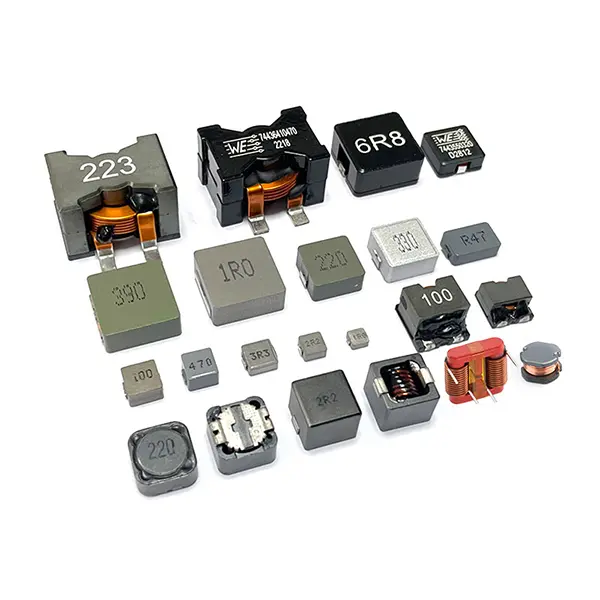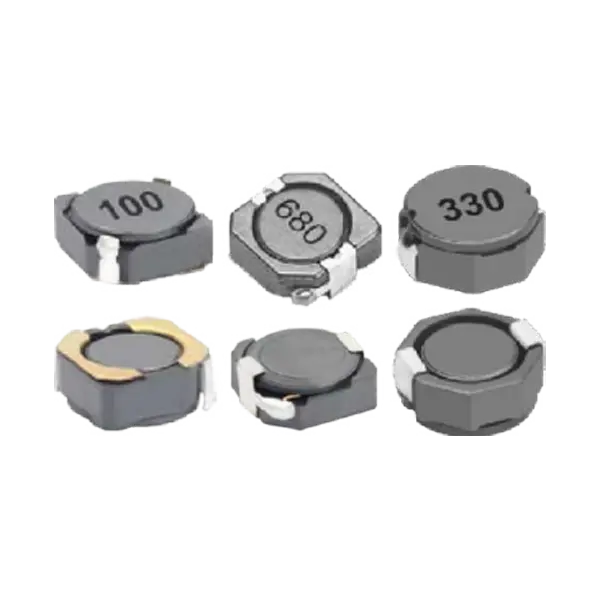Inductive components, such as inductors and transformers, are essential in electronics, aiding in energy storage, signal processing, and filtering. These electronic component types store energy in a magnetic field, playing a pivotal role in the functionality and efficiency of various electronic systems.
Inductive components are passive electronic components that use the principle of electromagnetic induction to store and transfer energy. They are widely used in various electronic circuits and systems. Here is some specific information about inductive components:
Types of Inductive Components: The most common types of inductive components include inductors, transformers, and chokes.
Inductors: Inductors are passive electronic components that store energy in a magnetic field when an electric current flows through them. They are typically made of a coil of wire wound around a core material, such as iron or ferrite. Custom inductors are used in various applications, including filtering, energy storage, and impedance matching.
Transformers: Transformers are inductive components that transfer electrical energy between two or more circuits through electromagnetic induction. They consist of two or more coils of wire wound around a common core material. Transformers are used to step up or step down voltage levels, isolate circuits, and match impedance.
Chokes: Chokes, also known as inductor filters or reactors, are inductive components used to block or filter out high-frequency noise or ripple currents in electronic circuits. They are designed to have a high inductance value and are often used in power supplies and audio circuits.
Inductance: Inductance is a property of inductive components that determines their ability to store energy in a magnetic field. It is measured in henries (H) and depends on factors such as the number of turns in the coil, the core material, and the physical dimensions of the component.
Core Materials: Inductive components can have different core materials, such as iron, ferrite, powdered iron, or air. The choice of magnetic core material depends on factors such as the desired inductance value, frequency range, and power handling capability.
Inductive Reactance: Inductive components exhibit a property called inductive reactance, which is the opposition to the flow of alternating current (AC) due to the inductance. Inductive reactance is directly proportional to the frequency of the AC signal and the inductance value.
Quality Factor (Q): The quality factor is a measure of the efficiency of an inductive component. It represents the ratio of the reactive power stored in the component to the power dissipated as heat. A higher quality factor indicates a more efficient component.
Saturation: Inductive components can experience saturation when the magnetic field strength reaches a maximum value, causing a decrease in inductance. Saturation can occur when the current flowing through the component exceeds its rated value or when the magnetic field strength exceeds the core material’s saturation level.
Applications: Inductive components are used in a wide range of fields, the inductor application includes power supplies, audio systems, telecommunications, motor control, RF circuits, and many more.
It is important to consider these specific details when selecting and using inductive components in electronic circuits to ensure proper functionality and performance.

IoT integration: Electronic component types will be designed to seamlessly integrate with IoT devices, with built-in wireless connectivity and enhanced sensor capabilities.
5G connectivity: Electronic component wholesale will be optimized for higher data rates and lower latency to support the rollout of 5G networks.
AI/ML support: Specialized processors and neural network accelerators will be developed to support AI and ML applications.
Energy efficiency: Electronic component manufacturers believe that components will continue to evolve to be more energy-efficient, with the development of low-power microcontrollers and power management ICs.
Flexible/stretchable electronics: Advances in materials and manufacturing techniques will enable the development of wearable devices and flexible displays.
Advanced packaging: 3D integration, SiP, and chipsets will enable higher performance, smaller form factors, and improved thermal management.

Choosing the right electronic component types is crucial for the success of your project. Start by understanding the project requirements, including operating conditions and power needs. Always check the specifications of each component, such as voltage, current, and power rating, to ensure they can handle the project’s conditions.
Quality is key for reliability, so choose components from reputable electronic component manufacturers. Also, consider the size and form factor, especially if space is limited. Cost and availability are important too, as they can impact your budget and project timeline.
Ensure the electronic component wholesale is compatible with others in your project, both physically and electrically. Consider the environmental conditions it will be exposed to and check if it complies with relevant regulations. Lastly, consider the component’s lifecycle to avoid future availability issues.
In summary, selecting the right electronic component types requires careful consideration of various factors, including project requirements, component specifications, quality, size, cost, availability, compatibility, environmental conditions, regulatory compliance, and lifecycle.
High Efficiency: Ensures optimal performance of electronic component wholesale.
Compact Size: Ideal for space-limited applications.
Durable: Withstands harsh conditions for longevity.
Versatile: These electronic component types are suitable for various electronic applications.
wechat / phone
0755-23018051